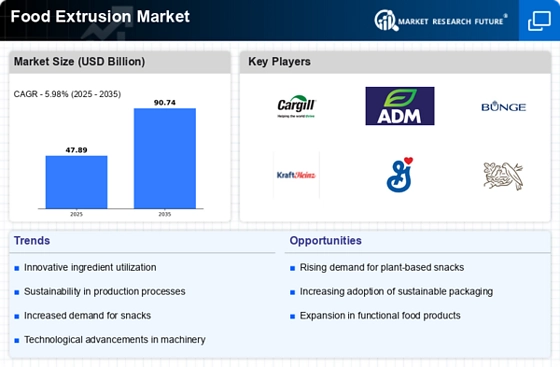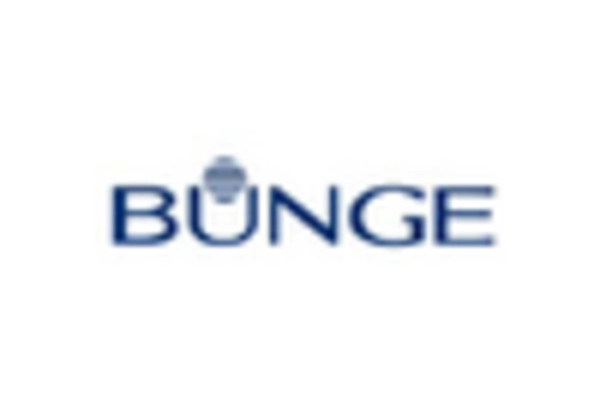Rising Demand for Convenience Foods
The Food Extrusion Market is experiencing a notable surge in demand for convenience foods. As lifestyles become increasingly fast-paced, consumers are gravitating towards ready-to-eat and easy-to-prepare meal options. This trend is reflected in market data, which indicates that the convenience food segment is projected to grow at a compound annual growth rate of approximately 4.5% over the next five years. Extruded products, such as snacks and breakfast cereals, are particularly favored due to their long shelf life and appealing textures. Consequently, manufacturers are investing in advanced extrusion technologies to meet this growing demand, thereby enhancing their product offerings in the Food Extrusion Market.
Increased Focus on Nutritional Value
In the Food Extrusion Market, there is an increasing emphasis on the nutritional value of extruded products. Consumers are becoming more discerning about the ingredients and health benefits of the foods they consume. This shift is prompting manufacturers to reformulate their products, incorporating whole grains, legumes, and other nutrient-dense ingredients into their extruded offerings. Market data indicates that products with enhanced nutritional profiles are gaining traction, with a projected growth rate of 6% in the next few years. As a result, the Food Extrusion Market is likely to see a rise in the development of functional foods that not only satisfy taste preferences but also contribute to overall health and wellness.
Growing Interest in Plant-Based Diets
The Food Extrusion Market is witnessing a significant shift towards plant-based diets, driven by health and environmental concerns. As consumers become more aware of the benefits of plant-based nutrition, the demand for extruded plant-based products is on the rise. Market analysis indicates that the plant-based food sector is anticipated to grow at a rate of 8% annually, with extruded snacks and meat alternatives leading the charge. This trend presents opportunities for manufacturers to innovate and diversify their product lines, catering to the evolving preferences of health-conscious consumers. The Food Extrusion Market is thus adapting to this paradigm shift, focusing on the development of nutritious and appealing plant-based extruded foods.
Innovations in Food Processing Technology
Technological advancements play a pivotal role in shaping the Food Extrusion Market. Innovations in extrusion technology, such as twin-screw extruders and high-temperature short-time processing, are enhancing product quality and efficiency. These technologies allow for better control over the extrusion process, resulting in improved texture, flavor, and nutritional content of extruded foods. Market data suggests that the adoption of these advanced technologies is expected to increase by 20% in the next few years, as manufacturers seek to optimize production and reduce costs. This focus on innovation not only boosts productivity but also aligns with consumer preferences for high-quality, nutritious products in the Food Extrusion Market.
Sustainability and Eco-Friendly Practices
Sustainability is emerging as a critical driver in the Food Extrusion Market. With growing awareness of environmental issues, consumers are increasingly favoring products that are produced using sustainable practices. This trend is influencing manufacturers to adopt eco-friendly extrusion processes and packaging solutions. Market Research Future suggests that the demand for sustainably produced food products is expected to rise by 7% annually. Companies are exploring ways to minimize waste and energy consumption during the extrusion process, thereby enhancing their sustainability credentials. As a result, the Food Extrusion Market is likely to witness a shift towards more environmentally responsible practices, aligning with consumer expectations for sustainable food options.


















Leave a Comment